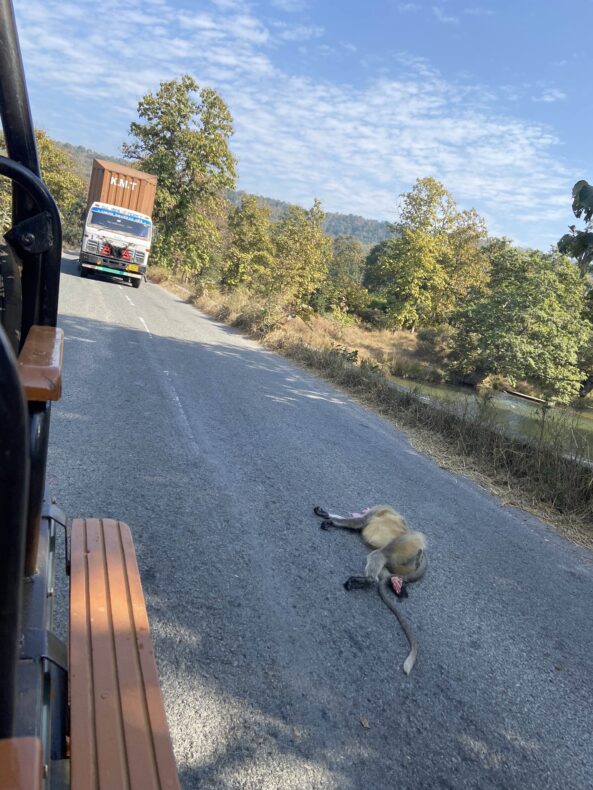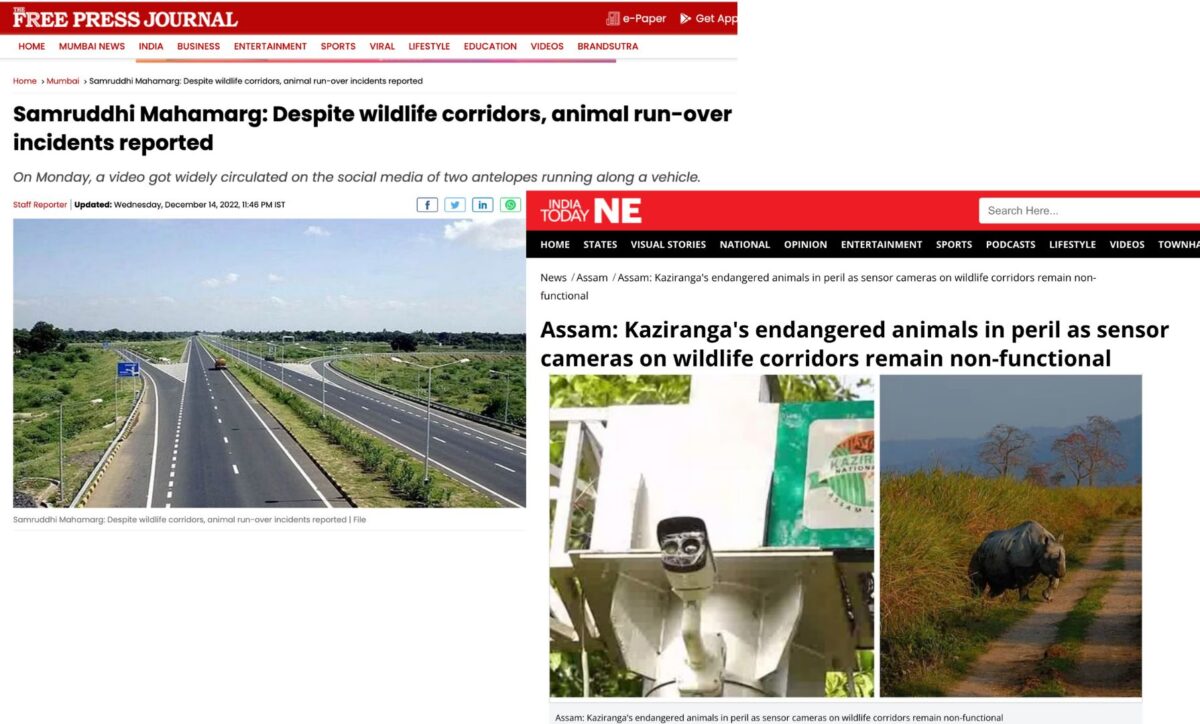
Reflections on Road Kills: Development’s Toll on India’s Wildlife Heritage
As an avid traveller and a passionate wildlife enthusiast, the rapid progress of India’s infrastructure development has caused me a growing sense of guilt and concern. The newly built roads, which promise better connectivity and convenience, that I often travel on these days to witness the wonders of wild India, are becoming silent killers of the natural world that I so cherish. Just days after the world celebrated International Tiger Day on July 29, a disturbing incident unfolded on social media and news sites, that shook me to the core as it cemented my concerns for the safety of wild India.
On August 12, a video emerged of a young tiger meeting a tragic end due to a road rash accident near the Nawegaon-Nagzira Tiger Reserve in Maharashtra. My heart sank watching the beautiful beast limping and disoriented, struck by a speeding car in the dead of night. I couldn’t help but reflect on the apathy of my fellow humans and the reality of how progress and development are exacting a heavy toll on wildlife.
Pathway of Progress or Destruction?
#Roadkills A tiger dies after being hit by a speeding vehicle near Navegaon Nagzira tiger reserve in Maharashtra. #roadstonowhere @mid_day @MahaForest pic.twitter.com/8oQVMsVoCV
— Ranjeet Jadhav (@ranjeetnature) August 11, 2023
In our pursuit for modern civilization and economic growth, we are constructing impressive infrastructure that boasts world-class roads and facilities. Yet, in this race for advancement, we are failing our promise to safeguard the fragile ecosystems that thrive alongside these modern roads of our country. The consequences are dire – numerous of endangered species are losing their lives due to unchecked traffic and careless speeds, disturbing the balance of nature.
Incidents of roadkill have been populating media headlines, more with each passing day. These are not mere statistics, but a stark reminders of the havoc we are wreaking.
The Road-Rail Quandary Plaguing India’s Wildlife -WildlifeSOS
Too Many of India’s Sloth Bears, Dhole Are Dying in Road Kills- Science the Wire
Over 6K wildlife killed in highway stretch through Kaziranga -Deccan Herald

Traversing on the Roads that Kills
While I acknowledge the need for efficient transportation, the reckless constructions without environmental consideration is pushing us to a point of no return. As I take many journeys, my mind lingers on thought of the weird crossroads of human convenience and environmental responsibility.

I recall a disturbing memory from my visit to Panna Tiger Reserve, where on the highway near to it, I saw a lifeless body of an alpha langur, brutally crushed by a passing vehicle. The sight was like a crime scene, with blood splattered on the road, and the lifeless eyes of the monkey staring into oblivion. It was a tragic end that could have easily befallen on any of the magnificent wildlife, including the majestic tigers that travel the same routes.
I have also traversed the roads near Kaziranga National Park, where incidents of road accidents involving rhinos and elephants have been reported, despite speed limits being strictly imposed. That makes me wonder are we doing enough?
Actions without Honest Intentions Fail
Sure efforts are being made to address the issue, such as implementation of wildlife corridors across various stretches of India. But these initiatives are not fool proof and have multi-level challenges of implementation. Despite these measures, loss of wildlife persists. It is evident that a more holistic approach is required, which calls for larger awareness among those taking those roads and honest upkeep of measures by those in authority.
Samruddhi Mahamarg: Despite wildlife corridors, animal run-over incidents reported – FPJ

Amendments and Environmental Debates
While the high roads within India are becoming “unsafe haven” for wildlife, the recently passed Forest (Conservation) Act, 2023, amendment to the 1980 Act, has ignited fervent debates among India’s conservation lobbies about protecting wildlife and the environment along India’s borders. As possibility of roads slicing through forests near borders heightens, there is apprehension about unchecked forest land diversion, leading to threat to ecosystems, wildlife, and danger of deforestation and encroachment.
Forest law amendments: Rich in rhetoric, poor in substance – The Indian Express

Responsibility Starts with Us
As individuals, we may not hold the power to make ground breaking decisions, but we can certainly influence change in our own capacity. Being aware of our responsibility towards nature, slowing down our vehicles near wildlife habitats, exercising vigilance, adhering to speed limits, spreading awareness and consciously following empathy can save countless lives.
If development requirements are unstoppable, then the need to protect our natural heritage is a more urgent matter. We can channel our collective outrage through informed actions and utilise empathy into tangible change.
As I continue my journey as a traveller and wildlife enthusiast, I commit to being a responsible and a vocal advocate for coexisting harmoniously with our fellow creatures. The roads we travel on cannot become pathway of nature’s destruction, instead they should be avenues for us to rediscover our reverence for nature.




